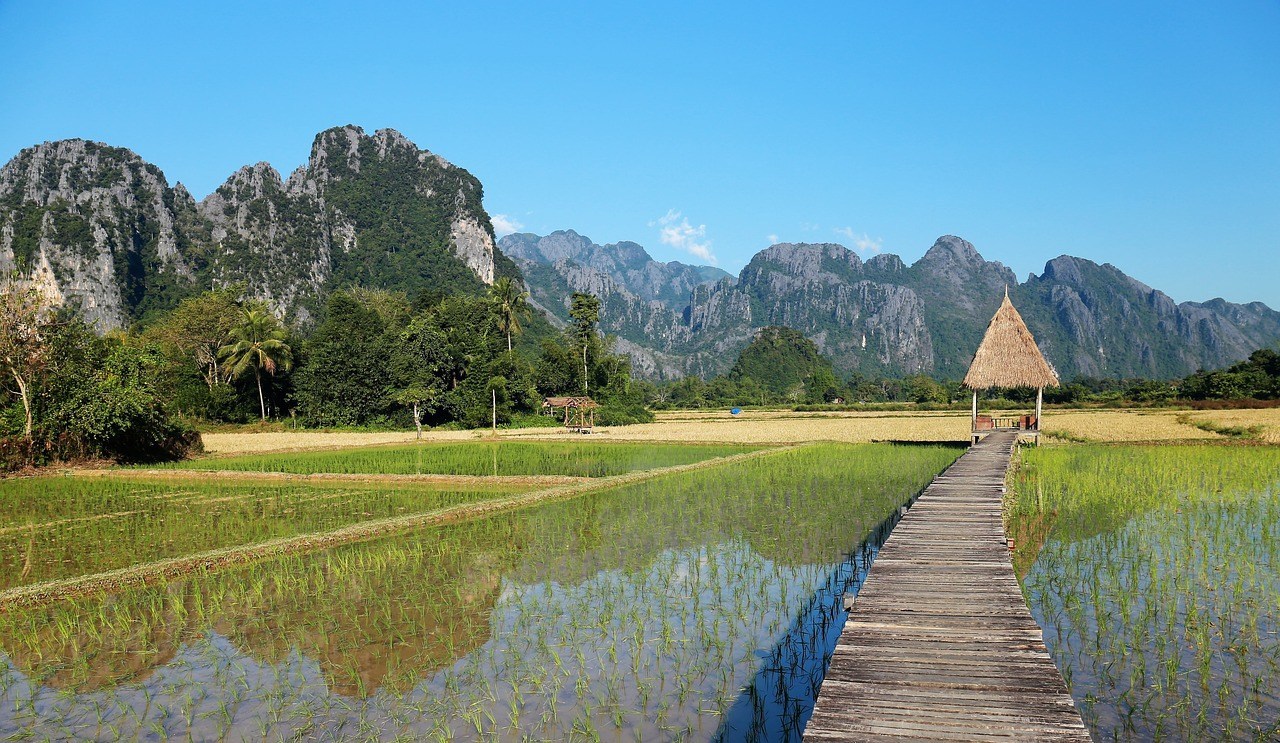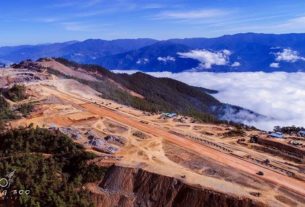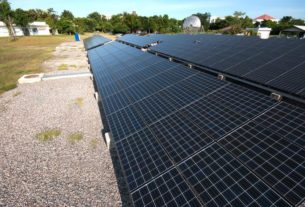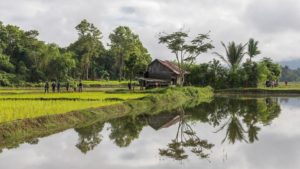 Foreign investors push economic zones in Laos despite debt, local opposition
Foreign investors push economic zones in Laos despite debt, local opposition
Foreign investment projects worth billions of dollars are poised to transform Laos’ Vang Vieng in spite of local opposition and the government’s precarious public debt. The area, known for its natural beauty, falls along the route of a new Chinese railway and is one of many projects in Laos under China’s Belt and Road Initiative.
Editorial
A new Chinese-backed economic zone in Laos is progressing despite a lack of transparency and significant local opposition. Developers of the Vang Vieng New Development Zone have finished environmental impact and feasibility studies and are now proposing the project to the government for final approval, according to one provincial government official.
The US$5.3-billion zone is being built by the Lao-Vang Vieng New Zone Development Group, a Chinese-backed venture. Large-scale construction in Vang Vieng would transform one of the country’s most popular tourist areas, famous for its natural beauty and resources. The environmental impact assessment for the project has yet to be made public.
The lack of transparency around such a major foreign investment is cause for concern in part because of the Lao government’s growing debt. The World Bank has estimated that Laos’ public debt could equal 68% of GDP by the end of 2020, with the government owing $1.2 billion dollars this year. Lao media report that the economic zone is supposed to generate between 27,800 and 50,000 jobs, though construction may take as long as 29 years.
According to some of the area’s residents however, most local people oppose the project and other large-scale development in Vang Vieng. In early 2019, the Lao government suspended surveys for another apparently separate Chinese development project in Vang Vieng after local residents objected, reportedly leading to “verbal confrontations” with surveyors.
“Many of us might not agree with this project going ahead, but what can we do? We can’t compete with the financial power of the Chinese,” asked one Vang Vieng resident, speaking with Radio Free Asia.
According to an official with the provincial Planning and Investment Department, the developers have said no villagers will be forced out of their homes. The Vang Vieng New Development Zone will, however, reportedly use over 7,000 hectares of land and affect 22 villages.
The Lao-Vang Vieng New Zone Development Group signed a memorandum of understanding with the Lao government for a project in the area in 2018. The agreement at the time was to construct a sustainable tourism project, with the same price tag of over 5 billion dollars. The project will now reportedly include major infrastructure, including roads, a convention center, four bridges, a shopping center and a hospital.
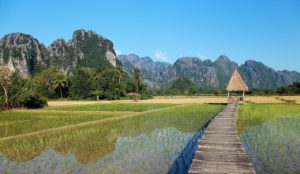
Vang Vieng projects continue pattern of threatening livelihoods, land, income
The Vang Vieng New Development Zone, like a number of large scale projects in Laos, has prompted major concerns about just compensation, land rights, environmental degradation.
Lao law allows the government to seize land for public purposes but requires that citizens be given compensation for lost income and property, including crops.
“We don’t care if the project takes land somewhere else. But if they try to take our land, which we have been farming for over 100 years, we won’t give it up,” one Vang Vieng resident told Radio Free Asia. “The compensation they would offer won’t be nearly enough. It’s not worth giving up our land.”
As foreign investments bring sweeping changes to local communities across Laos, residents have often voiced concerns about losing access to food, income and land—with 80% of the rural population involved in subsistence agriculture, the three are intertwined.
Among the largest Chinese investments in Laos is the China-Laos railway, which will connect Vientiane to Kunming in China’s Yunnan province with a station at Vang Vieng. The railway is a key piece of China’s Belt and Road Initiative (BRI) but has sparked controversies over pollution and compensation. The route goes through the mountains of northern Laos, with bridges and tunnels making up two-thirds of its length. The railway has led to pollution of water sources in the Vang Vieng area, presenting problems for livelihoods and public health.
Foreign investors roll out economic zones despite government’s debt crisis
Swelling debt has become a major concern for Laos and the Vang Vieng project’s price tag makes it one of the most expensive investment projects in the country. One of the latest dams on the Mekong River, the Sanakham dam, is planned by Chinese state-owned firm Datang International and would cost at least $2 billion. A cascade of seven dams on the Ou river, a tributary of the Mekong, is costing $2.73 billion. The Vang Vieng project will require nearly as much capital as the China-Laos railway, slated to cost $6 billion. The 411-kilometer railway was reportedly 90% complete in April and is projected to open in December 2021.
But as railways, dams and economic zones—now numbering at least a dozen—continue to roll out, Laos doesn’t appear to have a way to pay for them, regardless of the debate over domestic benefits. The country’s fiscal deficit will likely climb from 5.1 to 7.9% of GDP this year, according to World Bank projections reported in Lao media.
According to the government-affiliated Vientiane Times, “Without actions to stabilize the macroeconomy and accelerate structural reforms, the economy could tip into a period of extreme macroeconomic vulnerabilities.”
Public debt makes Laos increasingly vulnerable to pressure from foreign firms and governments. The majority of foreign direct investment comes from China, where creditors are reportedly discussing a move to delay a portion of Laos’ debt payments.
Critics have termed China’s approach to development in Laos “debt trap diplomacy” but the Lao government appears more than happy to take on the burden.
In Vang Vieng, the challenge for all involved is transparency: with little publicly available information, it’s unclear how the planned foreign investments would transform the area and the lives of local residents.
Source: https://www.aseantoday.com/2020/10/foreign-investors-push-economic-zones-in-laos-despite-debt-local-opposition/
